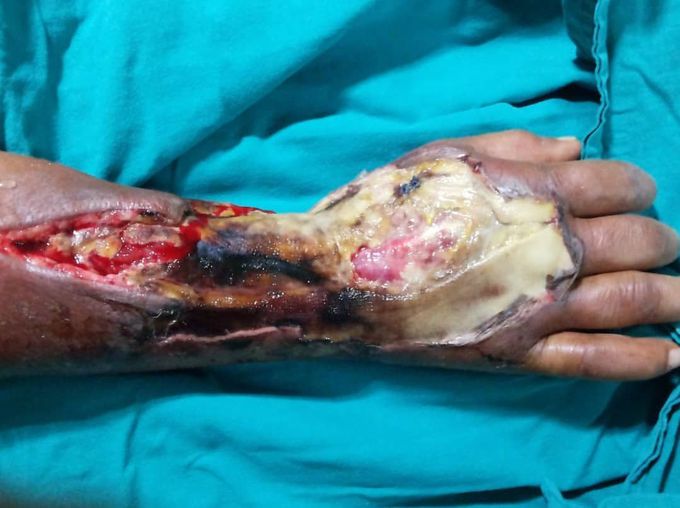


Severe necrosis after a rattlesnake bite! 🐍
The venom from the majority of rattlesnake bites will damage tissue and affect your circulatory system by destroying skin tissues and blood cells and by causing you to hemorrhage internally. Most rattlesnake venom is composed mainly of hemotoxic elements. There are around 30 different species of rattlesnake in the world. They can usually be easily identified by their distinctive buzz or rattle, from which their name derives. They use this rattle as a signal for predators to stay away. If you’re bitten by a rattlesnake, you may notice one or two puncture marks made by their large fangs. You’ll usually experience some pain, tingling, or burning in the area where you’ve been bitten. There may also be some swelling, bruising, or discoloration at the site. Other common symptoms include numbness in the face or limbs, lightheadedness, weakness, nausea or vomiting, sweating. Once bitten, the venom takes only seconds to travel from the rattlesnake’s retractable fangs, through your skin, and into your bloodstream. You’ll begin to see symptoms immediately, but your symptoms will worsen over time. You should reach medical help within 30 minutes of being bitten. If the bite is left untreated, your bodily functions will break down over a period of two or three days and the bite may result in severe organ damage or death. . . TAG a snake loving friend! 🐍 FOLLOW us @medicalpedia
Hemodynamic stimuli&nonhemodynamic stimuliEffects of sugar on teeth

